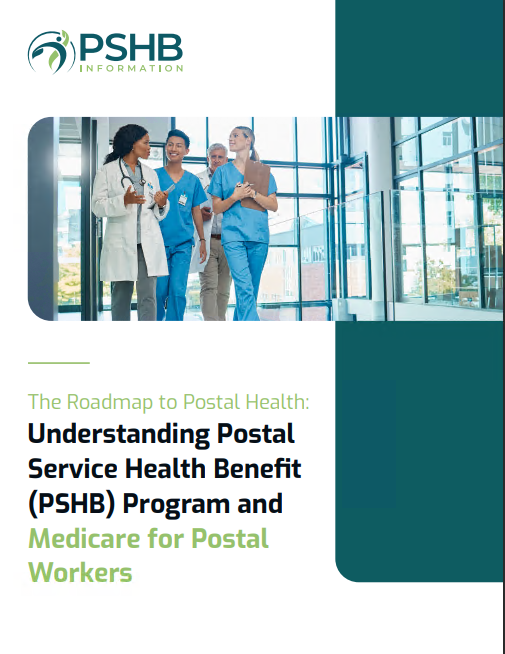Key Takeaways
-
Medicare Advantage plans can complement Postal Service Health Benefits (PSHB) by filling gaps in coverage and offering added flexibility for retirees.
-
Understanding how Medicare Advantage interacts with PSHB ensures you maximize your health benefits and avoid unexpected costs.
Understanding the PSHB Program and Medicare Advantage in 2025
If you’re a retiree or soon-to-be-retiree covered under the Postal Service Health Benefits (PSHB) program, you’ve probably heard about Medicare Advantage plans. These plans, offered as an alternative to Original Medicare, provide additional coverage options. But how do they fit into the PSHB framework? Here, we’ll break down what you need to know to make informed decisions about your healthcare.
How PSHB Works for Retirees
The PSHB program, launched in 2025, replaces the Federal Employees Health Benefits (FEHB) program for Postal Service employees and retirees. While PSHB retains many of the features of FEHB, it’s tailored specifically to the needs of postal workers and retirees. Here’s what you need to know:
-
Comprehensive Coverage: PSHB includes medical, dental, and vision options for enrollees.
-
Medicare Integration: Retirees eligible for Medicare are required to enroll in Medicare Part B to maintain their PSHB coverage, except for a few exemptions.
-
Prescription Drug Benefits: For Medicare-eligible enrollees, prescription drug coverage is provided through a Medicare Part D Employer Group Waiver Plan (EGWP).
-
Premium Contributions: The federal government covers about 70% of PSHB premiums, leaving enrollees responsible for the remaining 30%.
Medicare Advantage: A Quick Overview
Medicare Advantage plans (Part C) are an alternative to Original Medicare, offering coverage through private insurers. These plans bundle Medicare Part A, Part B, and often Part D benefits, along with extras like vision, dental, and wellness programs.
In 2025, Medicare Advantage plans remain popular due to their all-in-one convenience and potential cost savings. However, choosing the right plan requires careful consideration, especially when you’re also enrolled in PSHB.
Coordinating PSHB and Medicare Advantage
If you’re considering a Medicare Advantage plan alongside PSHB, it’s crucial to understand how the two programs interact. Here are some key points:
1. Eligibility and Enrollment
To enroll in a Medicare Advantage plan, you must already have Medicare Parts A and B. PSHB requires Medicare-eligible retirees to enroll in Part B, making you automatically eligible for Medicare Advantage.
2. Supplemental Coverage
Medicare Advantage plans often include coverage for services not covered by Original Medicare, such as hearing aids or gym memberships. These benefits can supplement your PSHB plan, providing more robust coverage overall.
3. Cost Sharing
While PSHB covers a significant portion of your healthcare costs, you’re still responsible for copayments, deductibles, and coinsurance. Medicare Advantage plans can help reduce some of these out-of-pocket expenses, depending on the plan you choose.
4. Provider Networks
Medicare Advantage plans typically have specific provider networks. If your preferred doctors or hospitals aren’t in the network, you may face higher costs. Check whether your healthcare providers participate in the plan’s network before enrolling.
5. Prescription Drug Coverage
PSHB provides prescription drug coverage through a Medicare Part D Employer Group Waiver Plan. If you enroll in a Medicare Advantage plan that includes drug coverage, ensure there’s no overlap or conflict between the two plans.
Advantages of Combining Medicare Advantage with PSHB
Pairing Medicare Advantage with PSHB can offer several benefits:
-
Expanded Benefits: Many Medicare Advantage plans include additional services, such as fitness programs, transportation to medical appointments, and over-the-counter allowances.
-
Lower Out-of-Pocket Costs: Some plans offer lower copayments and coinsurance compared to Original Medicare.
-
Simplified Billing: With bundled coverage, you’ll have fewer separate bills and administrative tasks.
Challenges to Consider
While Medicare Advantage plans can enhance your coverage, they’re not without potential drawbacks:
-
Limited Networks: You may need to switch healthcare providers if your preferred ones don’t participate in the plan.
-
Plan Variability: Coverage and costs can vary widely between plans, making it essential to compare options carefully.
-
Additional Premiums: Depending on the plan, you may have to pay an additional premium on top of your Medicare Part B premium and PSHB costs.
Making an Informed Decision
When deciding whether to pair Medicare Advantage with PSHB, consider the following steps:
1. Assess Your Healthcare Needs
Think about the types of care you’ll need most often. If you anticipate high medical expenses or need specific services like dental or vision care, a Medicare Advantage plan may be beneficial.
2. Compare Plans
Use the Medicare Plan Finder tool to compare Medicare Advantage plans in your area. Look for plans that align with your budget, healthcare needs, and preferred providers.
3. Understand PSHB Coverage
Review your PSHB plan’s benefits and costs to determine where you might have gaps in coverage. This will help you identify which Medicare Advantage features are most valuable to you.
4. Speak with a Benefits Counselor
Consult a benefits counselor or healthcare advisor who can help you evaluate your options and navigate the complexities of Medicare Advantage and PSHB integration.
Important Deadlines and Enrollment Periods
To make the most of your benefits, stay aware of key enrollment periods:
-
Medicare Open Enrollment: October 15 – December 7 each year, allowing you to join, switch, or drop a Medicare Advantage plan.
-
PSHB Open Season: Typically runs from mid-November to mid-December, enabling you to make changes to your PSHB coverage.
Tips for Managing Your Coverage
Managing your healthcare benefits doesn’t have to be overwhelming. Here are some practical tips:
-
Keep All Documents Handy: Maintain organized records of your Medicare and PSHB enrollment, benefits, and payment information.
-
Review Annually: Revisit your healthcare needs and coverage options each year during Open Enrollment to ensure your plans still meet your needs.
-
Stay Informed: Keep up with updates to Medicare and PSHB programs, as changes can impact your coverage and costs.
How Medicare Advantage Enhances Your Retirement
Retirement is a time to focus on enjoying life, and having the right healthcare coverage ensures peace of mind. Medicare Advantage plans can fill in gaps and add value to your PSHB benefits, providing:
-
Comprehensive care tailored to your needs.
-
Predictable costs for better budgeting.
-
Access to additional wellness programs and resources.
By understanding how Medicare Advantage fits into the PSHB landscape, you can create a healthcare strategy that supports your lifestyle and financial goals.
Empower Your Healthcare Choices in 2025
Taking charge of your healthcare in 2025 involves understanding the options available and making informed decisions. Medicare Advantage plans and PSHB can work together to provide the comprehensive coverage you need for a healthy and fulfilling retirement.










